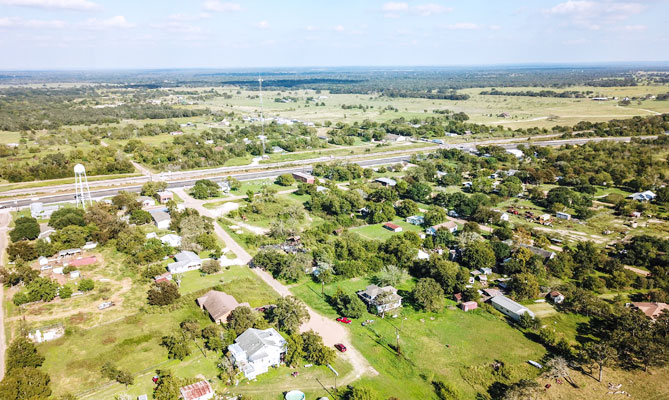Heritage and protected trees have special guidelines related to them in Austin. There are some complicated and controversial rules which is why we are going to introduce you to the City of Austin critical root zone. Trees can change lots in many different ways, but the most important is that they give a new character to a house. This is why you need to get familiar with critical root zone Austin rules and learn what qualifies as a heritage or protected tree.
City of Austin Critical Root Zone – Protected and Heritage Trees
Protected Trees
When measured at 4.5’ above the ground, the tree is considered a protected one if its diameter is over 19”. If you want to avoid a survey, the easiest way you figure this out is to measure the tree’s circumference and then divide the result by 3.154 (pi). The diameter x π = circumference for those of you who don’t remember this from math class.
Even though this seems easy, some trees can get tricky. You will have to measure each limb for any multi-stemmed tree connected to the ground. Then, consider any half of the diameter of other limbs and add the diameter of the biggest limb to it.
One thing to keep in mind is that palm trees are not actually “trees”. The Land Development Code doesn’t have a specific definition of a “tree”, but palms don’t fall into the category for scientific reasons. So, even if your palm tree is in the City of Austin critical root zone, it still can’t be considered a protected tree.
Heritage Trees
When you measure a tree as described above and it has a diameter of over 24”, it is considered a heritage tree. Only the trees on the following list are considered heritage:
- Oaks
- Bald Cypress
- Texas Ash
- Texas Madrone
- American Elm
- Pecan
- Bigtooth Maple
- Eastern Black Walnut
- Arizona Walnut
Removing Heritage and Protected Trees
You will need a permit to remove a protected tree. The only exception is if the tree is damaged (for example in a storm or fire) and you remove it within 7 days. If the tree causes an imminent hazard to a property of life you can remove it without a permit. All protected trees are treated equally, but oaks are usually more protected than others.
When it comes to removing heritage trees, you will be able to do it only after a variance is approved. Of course, you can do it without it in the same circumstances as mentioned above. After the City Arborist’s recommendation, you will be granted a variance only if the tree is an imminent hazard to life or property, dead, or diseased and can’t be cured.
Critical Root Zone
Understanding the City of Austin critical root zone is the most important concept to get a grasp on the City’s tree rules on development. Determining acceptable impacts on a tree’s roots is done through a measuring system called the CRZ. Usually, the full CRZ of a tree extends around the tree and is equal to its diameter. Then, it is broken into half and into quarters. Each section of the tree’s CRZ has different rules applied to it.
Q: How do you find the critical root zone?

A: The general rule of thumb is that the radius increases by 1.5 feet for every inch of a tree trunk. So, to accurately measure your tree’s critical root zone, measure the circumference and multiply it by 1.5. Make sure you measure the circumference at about 4.5’ above the ground if there are no swollen parts in the area.
Q: What is the critical root zone of a tree?
A: Also referred to as a tree protection zone, the critical root zone of a tree is essentially an imaginary or invisible circle that runs just outside or along the trip line of a tree. The area is very important for the development of a tree as this is where the most critical tree roots are located.
Q: How is CRZ calculated?
A: To calculate a legal CRZ area you will have to measure the circumference of your tree first. When you take the measurements, multiply the circumference by 1.5 and you will get the accurate CRZ. Don’t forget to do the measurement 4.5’ above the ground on a spot with no odd burrs.
Tree Removal Service Overview
Hopefully, we helped you understand how to get accurate critical root zone Austin measurements throughout this text. As long as you stick to the general rules of thumb you should get correct results. Make sure you consult with a professional if you’re thinking about removing your tree. Don’t forget about variances and permits for protected and heritage trees in the City of Austin.



